Roadless rule fuels debate over how deep into forest crews should clear beetle-killed trees
Concern about an early and potentially explosive wildfire season in Colorado has fanned the flames of debate over how far into the national forest crews should build temporary roads to clear trees and reduce the fuel load around towns.
The release last week of another draft of the controversial Colorado Roadless Rule further fueled the controversy. The rule would allow temporary road building a half mile into the national forest surrounding communities and tree thinning without roads another mile into the forest.
Colorado conservation groups have opposed the Forest Service allowing such wide latitude for fuel reduction projects, arguing a much smaller defensible space around communities is adequate in the event of forest fires and that large-scale thinning doesn't do much to mitigate fire risk.
Some scientists say road building actually degrades forest health, causing erosion and doing little to prevent wildfire in the wake of the state's ongoing mountain pine bark beetle epidemic. Some studies back up that school of thought.
But regional forester Rick Cables, speaking in defense of the Colorado Roadless Rule (pdf) last week, said the half-mile fuel-treatment exemption for road building was the result of years of discussion.
“We had some meetings over the past few years with scientists, firefighters, incident commanders, specialists of all kinds to struggle with what would be appropriate, that would afford the degree of protection we think is necessary but also protect roadless values,” Cables said. He was asked if the half-mile exemption would be enough given Colorado's steep and daunting terrain and the ferocity of recent fires.
“We believe that there's the ability to do the treatment necessary to change the fuel composition, which would change the fire behavior and give us the opportunity to do the fire suppression necessary with the provisions in this rule,” Cables said.
A coalition of Colorado environmental groups late last week opposed the Colorado Roadless Rule, which the Obama administration expects to implement by early next year, because it would trump the 2001 Clinton Roadless Rule, which they claim offers more protections for the state's 4.2 million acres of roadless federal lands than the draft Colorado rule.
“We recognize that the Obama administration's proposed rule has improved somewhat from earlier versions, but unfortunately it still falls short of its commitment to protect Colorado's roadless forests with standards equal to or greater than [Clinton's] 2001 National Roadless Rule,” the groups stated in a release.Mike King, director of the Colorado Department of Natural Resources, points out that Colorado in 2001 was not in the midst of a raging pine beetle epidemic that has claimed more than 4 million acres of lodgepole pines in Colorado and Wyoming. Saying “a lot's changed in the ensuing decade” since the Clinton rule, King points out that one in five Coloradans now lives in the wildland urban interface (WUI) where communities meet national forest land.
Politicians and public figures from Boulder Mayor Susan Osborne to former vice president and U.S. Sen. Al Gore have blamed global climate change for prolonged drought and warming that's exacerbated the pine beetle epidemic. Boulder last summer saw the costliest wildfire in state history in terms of property damage when 169 homes were destroyed in the Fourmile Canyon Fire.
A bill that would lock in lower residential property rates for people who lose their homes in wildfires (instead of higher rates applied to vacant property) passed out of the state Senate last week and appears headed for Gov. John Hickenlooper's desk.
Already this spring several major wildfires, fueled by high winds and an unusually dry winter, have erupted on Colorado's Front Range, raising anxiety levels with the hottest, driest days of summer still months away.
Hickenlooper last week got the annual pre-season fire briefing from the Colorado State Forest Service and other state and federal firefighting agencies and the prediction was for a long wildfire season, particularly in the southern part of the state.
“Colorado's wildfire season has already begun and with extreme dry and warm conditions conducive to wildfire,” Hickenlooper said in a release. “We need to be prepared for an extended firefighting season.”
The release last week of another draft of the controversial Colorado Roadless Rule further fueled the controversy. The rule would allow temporary road building a half mile into the national forest surrounding communities and tree thinning without roads another mile into the forest.
Colorado conservation groups have opposed the Forest Service allowing such wide latitude for fuel reduction projects, arguing a much smaller defensible space around communities is adequate in the event of forest fires and that large-scale thinning doesn't do much to mitigate fire risk.
Some scientists say road building actually degrades forest health, causing erosion and doing little to prevent wildfire in the wake of the state's ongoing mountain pine bark beetle epidemic. Some studies back up that school of thought.
But regional forester Rick Cables, speaking in defense of the Colorado Roadless Rule (pdf) last week, said the half-mile fuel-treatment exemption for road building was the result of years of discussion.
“We had some meetings over the past few years with scientists, firefighters, incident commanders, specialists of all kinds to struggle with what would be appropriate, that would afford the degree of protection we think is necessary but also protect roadless values,” Cables said. He was asked if the half-mile exemption would be enough given Colorado's steep and daunting terrain and the ferocity of recent fires.
“We believe that there's the ability to do the treatment necessary to change the fuel composition, which would change the fire behavior and give us the opportunity to do the fire suppression necessary with the provisions in this rule,” Cables said.
A coalition of Colorado environmental groups late last week opposed the Colorado Roadless Rule, which the Obama administration expects to implement by early next year, because it would trump the 2001 Clinton Roadless Rule, which they claim offers more protections for the state's 4.2 million acres of roadless federal lands than the draft Colorado rule.
“We recognize that the Obama administration's proposed rule has improved somewhat from earlier versions, but unfortunately it still falls short of its commitment to protect Colorado's roadless forests with standards equal to or greater than [Clinton's] 2001 National Roadless Rule,” the groups stated in a release.Mike King, director of the Colorado Department of Natural Resources, points out that Colorado in 2001 was not in the midst of a raging pine beetle epidemic that has claimed more than 4 million acres of lodgepole pines in Colorado and Wyoming. Saying “a lot's changed in the ensuing decade” since the Clinton rule, King points out that one in five Coloradans now lives in the wildland urban interface (WUI) where communities meet national forest land.
Politicians and public figures from Boulder Mayor Susan Osborne to former vice president and U.S. Sen. Al Gore have blamed global climate change for prolonged drought and warming that's exacerbated the pine beetle epidemic. Boulder last summer saw the costliest wildfire in state history in terms of property damage when 169 homes were destroyed in the Fourmile Canyon Fire.
A bill that would lock in lower residential property rates for people who lose their homes in wildfires (instead of higher rates applied to vacant property) passed out of the state Senate last week and appears headed for Gov. John Hickenlooper's desk.
Already this spring several major wildfires, fueled by high winds and an unusually dry winter, have erupted on Colorado's Front Range, raising anxiety levels with the hottest, driest days of summer still months away.
Hickenlooper last week got the annual pre-season fire briefing from the Colorado State Forest Service and other state and federal firefighting agencies and the prediction was for a long wildfire season, particularly in the southern part of the state.
“Colorado's wildfire season has already begun and with extreme dry and warm conditions conducive to wildfire,” Hickenlooper said in a release. “We need to be prepared for an extended firefighting season.”
![]() 0 Comments on "Roadless rule fuels debate over how deep into forest crews should clear beetle-killed trees"
0 Comments on "Roadless rule fuels debate over how deep into forest crews should clear beetle-killed trees"
Be the first to comment below.



 Vail Town Council to weigh new plan to redevelop T...
Vail Town Council to weigh new plan to redevelop T... 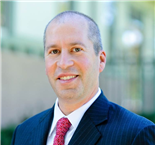 All about indexes
All about indexes 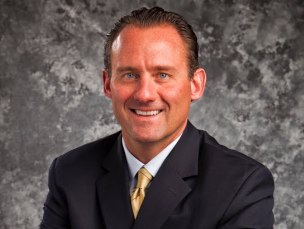 Transforming your social security into a winning r...
Transforming your social security into a winning r...  Pass sales, real estate transactions, revenues inc...
Pass sales, real estate transactions, revenues inc...  Vail Valley native with passion for Biophilic inte...
Vail Valley native with passion for Biophilic inte...  Beaver Creek starts work on new summer activities
Beaver Creek starts work on new summer activities  Land Trust, ECO Trails, Vail Resorts team up to cl...
Land Trust, ECO Trails, Vail Resorts team up to cl...  EUROVISION named Host Broadcaster for 2015 World A...
EUROVISION named Host Broadcaster for 2015 World A...  Vail Resorts brings back Lindsey Vonn's 'School of...
Vail Resorts brings back Lindsey Vonn's 'School of...  Hundreds turn out for 2015 World Championships vol...
Hundreds turn out for 2015 World Championships vol...  Eagle County Senior Health Expo and 9th Annual Hea...
Eagle County Senior Health Expo and 9th Annual Hea...  Final race of Vail Mountain Trail Running Series s...
Final race of Vail Mountain Trail Running Series s...  Before you write your will ...
Before you write your will ... 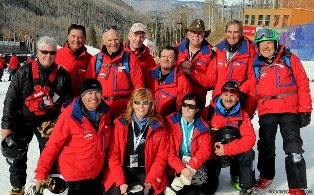 2015 World Ski Championships volunteer recruitment...
2015 World Ski Championships volunteer recruitment... 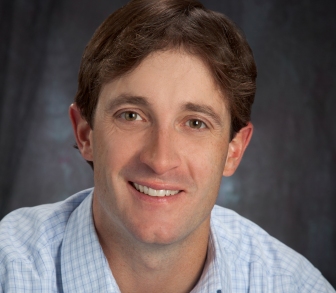 Ascent Sotheby’s International Realty in Vail an...
Ascent Sotheby’s International Realty in Vail an...  CDOT outlines road closures for local stages of US...
CDOT outlines road closures for local stages of US...  Italian artist creates unique trophies for Vail, B...
Italian artist creates unique trophies for Vail, B... 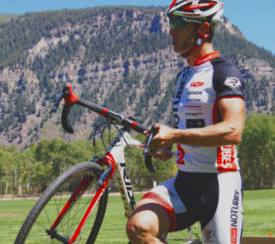 Vail Recreation District once again hosting Jake W...
Vail Recreation District once again hosting Jake W... 

